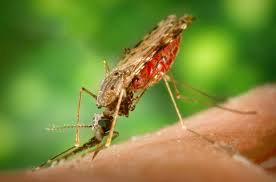03 Apr Biomarkers May Lead to Breath Test For Malaria
 MedicalResearch.com Interview with:
MedicalResearch.com Interview with:
Amalia Z. Berna
CSIRO Food and Nutrition Flagship
Acton ACT 2601
MedicalResearch: What is the background for this study? What are the main findings?
Response: Globally an estimated 3.2 billion people in 97 countries are at risk of malaria and, in 2013, an estimated 198 million cases and 584,000 deaths were attributed to this infection. Accurate diagnosis of malaria is important to provide adequate treatment, conserve valuable drugs, and help prevent the emergence of resistant strains of the parasite. It is becoming important to be able to diagnose low level and asymptomatic cases, to support the drive towards local and/or global eradication.
Detection of volatile chemicals in expired breath has been used to diagnose or monitor a small number of diseases, including Helicobacter pylori infection, diabetes and lung inflammation but, if breath analysis is to be more broadly useful, we need to identify reliable biomarkers for a wider range of diseases and to develop more robust methods for breath analysis.
In collaboration with Professor James McCarthy of the QIMR Berghofer Institute and Associate Professor Kevin Saliba of the ANU, we found:
- Four specific thioether biomarkers in the breath of volunteers with experimentally induced blood stage Plasmodium falciparum
- That the levels of the volatiles strongly correlate with the levels of malaria parasitaemia.
- That the thioethers are not produced by in vitro cultures of falciparum.
- That although we do not know the metabolic origin of the thioethers, our results suggest that interplay between host and parasite metabolic pathways is involved in their production.
We think it is important to emphasise that no volunteer was infected with malaria primarily for the purpose of this study. Our research was entirely piggy-backed on pre-existing trials of malaria therapeutics.
MedicalResearch: What should clinicians and patients take away from your report?
Response: This publication describes the first analysis of human breath specimens for biomarkers of malaria. From a practical point of view, providing breath samples could be simpler and more convenient for patients than giving blood samples.
The fact that changes in VOC levels in infected volunteers’ breath occurred at low parasitemia indicates that the biomarkers have promise for diagnosing malaria with unprecedented sensitivity. The breath biomarkers may be applicable below the threshold of detection (100 parasite µL-1) of rapid diagnostic tests, which target the circulating PfHRP2 biomarker.
MedicalResearch: What recommendations do you have for future research as a result of this study?
Response:
- Investigate whether the same thioethers can be detected in patients suffering from naturally-acquired falciparum infections.
- Investigate whether similar volatiles are found with other species of malaria.
- Identify a suitable animal model of malaria to enable studies of the metabolic origins of the thioethers.
- Develop cheap and reliable methods to sense these compounds in expired breath.
Citation:
Biomarkers of infection with Plasmodium falciparum detected in human breath.
Berna AZ1, McCarthy JS2, Wang XR3, Saliba KJ4, Bravo FG5, Cassells J5, Padovan B5, Trowell SC5.
J Infect Dis. 2015 Mar 25. pii: jiv176. [Epub ahead of print]
[wysija_form id=”2″]
MedicalResearch.com Interview with: Amalia Z. Berna, CSIRO Food and Nutrition Flagship, & Acton ACT 2601 (2015). Biomarkers May Lead to Breath Test For Malaria
Last Updated on April 3, 2015 by Marie Benz MD FAAD
